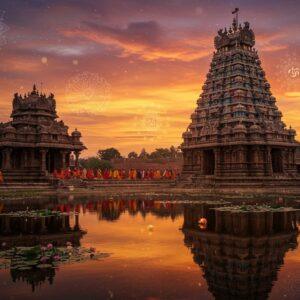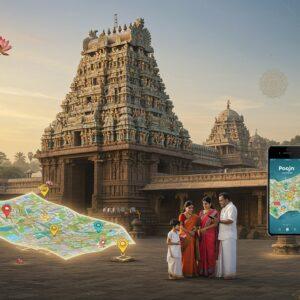
The Ganges River, revered as Ganga, holds profound cultural, spiritual, and historical significance for millions in India. This blog follows its journey from the Himalayan source to the Bay of Bengal, exploring its length, key locations, and the enriching experience of a Ganges River cruise.
The Himalayan Origins of the Ganges
The Ganges originates from the Gangotri Glacier in Uttarakhand, nestled in the western Himalayas at approximately 3,892 meters (12,769 feet). Initially known as the Bhagirathi River, named after King Bhagirath, it merges with the Alaknanda River at Devprayag, officially becoming the Ganges. Devprayag is a revered pilgrimage site, part of the Chota Char Dham Yatra. Nearby, the town of Gangotri houses the Gangotri Temple, dedicated to Goddess Ganga.
The Upper Reaches of the Ganges
Flowing through Uttarakhand, the Ganges graces important towns like Rishikesh and Haridwar. Rishikesh, the ‘Yoga Capital of the World,’ is renowned for its numerous ashrams and yoga centers. Haridwar, one of Hinduism’s seven holiest cities, hosts the magnificent Kumbh Mela every twelve years. The river then descends into the northern Indian plains, nourishing agriculture and supporting a diverse ecosystem.
The Middle Course of the Ganges
The Ganges continues through Uttar Pradesh and Bihar, passing historic cities like Varanasi, one of the world’s oldest living cities and a major spiritual hub where millions perform rituals along the ghats. Prayagraj, famed for the Triveni Sangam (the confluence of the Ganges, Yamuna, and mythical Saraswati rivers), also hosts the Kumbh Mela. Other significant cities include Kanpur and Patna, rich in cultural and historical heritage.
The Lower Ganges and its Delta
In West Bengal, the Ganges branches out, with the Hooghly River being a major distributary. Kolkata, situated on the Hooghly’s banks, is known for its colonial architecture and vibrant history. The Sundarbans mangrove forest, a UNESCO World Heritage Site in the Ganges Delta, provides a haven for the Bengal tiger. The river culminates its journey, flowing into the Bay of Bengal.
The Ganges Delta: A Vital Ecosystem
The Ganges Delta, shared by India and Bangladesh, is one of the world’s largest, spanning about 100,000 square kilometers (39,000 square miles). Its intricate network of rivers and tidal channels supports extensive agriculture, crucial for crops like rice and jute. The Sundarbans, within the delta, is a UNESCO World Heritage Site, renowned for its unique mangrove forests and the endangered Bengal tiger. Its rich biodiversity encompasses a wide array of plants, birds, and aquatic life. The delta, however, is vulnerable to cyclones and floods, impacting millions. Ongoing efforts focus on sustainable development and disaster management.
Experiencing the Ganges: A River Cruise
A Ganges River cruise offers an immersive exploration of the diverse landscapes and cultures along the river. Cruises typically start in Kolkata, traveling upstream to various historical and cultural landmarks. Travelers can visit temples, palaces, and local markets, gaining insights into the region’s rich heritage. Cruises often showcase traditional music, dance, and local cuisine, enriching the experience. Popular stops include Mayapur, the headquarters of ISKCON, and Murshidabad, known for its historical significance and architecture. Luxury cruises with immersive experiences, including onboard activities like cooking lessons and cultural talks, are also available.
For those seeking spiritual journeys, several themed cruises cater to specific interests, such as exploring India’s sacred sites or focusing on the divine feminine. These cruises offer unique itineraries that delve deeper into the spiritual aspects of the Ganges and its surrounding areas.
Several companies offer a variety of cruise options. Pandaw, for instance, features a 14-night cruise highlighting Indian culture and history. Other options include LGBTQ+ hosted cruises, luxury rail and cruise packages, and multi-day itineraries from New Delhi to Kolkata or Mumbai. Uniworld offers immersive experiences with onboard activities like cooking lessons and cultural talks.
Poojn.in: Your Companion for Spiritual Journeys
Enhance your spiritual journey along the Ganges with Poojn.in, India’s leading online store for cultural and religious goods. We offer a wide selection of puja items, including diyas, incense, and more, to enrich your experience. Whether preparing for a Ganga Aarti or seeking religious items for personal worship, Poojn.in caters to all your spiritual needs. Explore our diverse collection of puja samagri and embark on your spiritual exploration with authenticity and convenience.
- Find everything you need for a traditional Ganga Aarti, from pure ghee and cotton wicks to beautifully crafted brass diyas. Mangalam Camphor adds a touch of purity to your ceremonies.
- Create a sacred space with our exquisite idols and murtis. Discover divine representations of Lord Shiva and Ladoo Gopal to enhance your devotion.
Poojn.in is your one-stop shop for all your spiritual needs. Visit us today and discover the perfect items to enhance your connection with the divine.
Conclusion
From the Himalayas to the Bay of Bengal, the Ganges River plays a vital role in the lives of millions. Its cultural, spiritual, and ecological significance is undeniable. The Ganges Delta, a fertile and biodiverse region, is crucial for agriculture and conservation. A Ganges River cruise provides an unforgettable journey, revealing the region’s rich heritage and traditions. As we cherish and protect this sacred river, we ensure its continued flow, inspiring and sustaining generations to come.
FAQs: Understanding the Ganges
Where does the Ganges River begin? The Ganges originates from the Gangotri Glacier in the Himalayas, specifically at Gaumukh in Uttarakhand, India.
What is the length of the Ganges? The Ganges stretches approximately 2,525 kilometers (1,569 miles).
What defines the Ganges Delta? The Ganges Delta, also known as the Sundarbans, is the world’s largest delta, formed by the confluence of the Ganges, Brahmaputra, and Meghna rivers, emptying into the Bay of Bengal.
Are online maps of the Ganges Delta available? Yes, detailed maps of the Ganges Delta are readily available online, showcasing its intricate network of rivers and channels.
What is the importance of the Ganges River? The Ganges holds immense cultural, religious, and economic importance for millions in India and Bangladesh. Sacred in Hinduism, it provides water for drinking, agriculture, and industry.
Which major cities are located along the Ganges? Major cities along the Ganges include Rishikesh, Haridwar, Kanpur, Allahabad (Prayagraj), Varanasi, and Kolkata.
What is the current state of the Ganges River’s cleanliness? The Ganges faces pollution challenges from industrial waste, sewage, and religious offerings. Efforts are underway to clean and restore the river.
What wildlife inhabits the Ganges River? The Ganges supports diverse wildlife, including the Ganges river dolphin, crocodiles, and numerous fish species. The Sundarbans is renowned for its Bengal tigers.
Learn more about sacred spaces and Hindu Goddesses on Sacred Spaces of India: A Temple Journey and Hindu Goddesses: Exploring the Divine Feminine.


